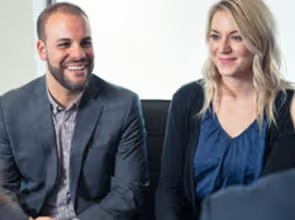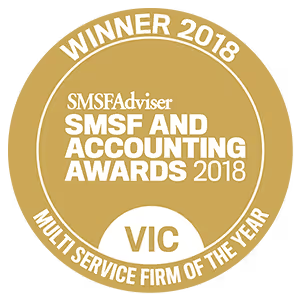For many business owners, their business represents the sum total of many years of hard work, challenges and stress, and much of their personal wealth can be tied up in their business.
When a business is sold to realise this wealth, capital gains tax (CGT) can be a significant factor in how much wealth is retained by the owner.
While some of the tax that businesses pay when selling is unavoidable, there are multiple strategies to minimise tax that you can implement right now, even if the prospect of selling is many years away. If you’re reading this and currently run a small business, you can prepare for some incredibly generous tax minimisation strategies in the future.
Small business owners are entitled to a variety of concessions that can significantly reduce or eliminate the amount of capital gains tax you pay upon the sale. These small business CGT concessions are an essential tool when holding on to that wealth that you’ve worked so hard towards creating.
At Liston Newton Advisory, our business accountants can give you comprehensive advice and guidance for your business.
[general_awards][/general_awards]
Step 1: Accessing the first 50% CGT reduction
The first part of qualifying for the CGT reduction relates to the type of structure that you’ve set up for your business. Correctly structuring your assets is an incredibly important part of tax minimisation, and unfortunately, one that is too often overlooked in haste to set up a business.
As referenced by the Australian Tax Office (ATO), the following rules apply:
- Individuals or trusts will qualify for a 50% discount if they hold an asset for at least 12 months before selling it. This means you would only include 50% of the capital gain in your assessable income.
- Companies are not entitled to a CGT discount.
- Partnerships do not pay tax on capital gains. Instead, the individual partners determine their share of the capital gain when working out their net capital gain to include in their assessable income.
For example, if you run your business from a family or unit trust, you will qualify for the first 50 per cent CGT discount, and may qualify for the remaining small business concessions.
If you run your business as a company, and the company shares are held by a family trust or held by you personally, you will qualify for the first 50 per cent CGT discount and may qualify for the remaining small business concessions.
If you run your business as a company, and hold the company shares in another company – you will not qualify for the first 50 per cent discount, but may qualify for the remaining small business concessions.
How to qualify:
To be classified as a small business, your business must have either less than $2 million of turnover, or net assets of less than $6 million. The entity claiming the concession must also have net assets of less than $6 million.

Previously, you could qualify for the small business CGT concession by counting the assets and liabilities held by both the business and the entities relating to it. For example, if you ran a business in a company and held the company shares in a trust, you could count a business loan in your family trust as a liability that reduces the net asset value of the business.
As of February 2018, this has now changed when you are selling shares or units in a unit trust. The new legislation requires two tests:
Firstly, the business must qualify as a CGT small business entity (having a revenue of $2 million or less) or satisfying a $6 million net value asset test.
Secondly, the $6 million net asset test is applied to the entity that holds the business. For example, if a family trust holds shares in a company, the family trust must also have assets of less than $6 million. It gets even more complicated after this, as the beneficiaries of the trust can also be included in the asset test. This requires careful planning and expert advice to get right.
Step 2: Once you qualify for the first 50% CGT reduction, there are 4 additional concessions to look into
If you pass the tests above and qualify for the small business CGT concessions, there are four concessions available to you. Business owners don't have to use all of the CGT exemptions; they can choose which ones they want to use.
1. 15-year exemption
The first and most valuable concession to consider is the 15-year exemption. Have you continuously owned your active business asset for more than 15 years, are you retiring, and are you aged 55 or older? If yes, read on. If no, go to the 50 per cent active asset concession below.
Should you qualify for the 15-year exemption, you can disregard the CGT on the sale of your business. What can be even more appealing, is that the CGT event may be contributed to each CGT concession stakeholder’s complying superannuation fund (up to their CGT cap amount*), and it wouldn’t be counted as a non-concessional contribution if it is made within 30 days of the payment.
*CGT cap amount is $1,445,000 for the 2017-18 income year.
Example: the 15-year exemption in action
Steven is aged 61 and decides to sell his Real Estate Agency to a national brand that is buying up smaller businesses. Steven is looking to retire upon the sale and travel more. He is offered $1.2 million for the business. Steven started the business from scratch when he was 40 years old (21 years ago), the business is held in a family trust. This means there is a $1.2 million capital gain. As Steven is over age 55, is retiring, and has held the business for over 15 years, he can apply the 15-year exemption.
- Cost Base: $0
- Sale Price: $1,200,000
- Capital Gain: $1,200,000
- Tax payable after 15-year exemption applies: $0
Steven can choose to contribute the $1.2 million into his superannuation fund, and he can then choose to start a pension and pay no tax on the earnings in the fund and no tax on withdrawals.

2. 50 per cent active asset reduction
A further 50 per cent reduction can apply if you are disposing of an ‘active asset’. An active asset is an asset held in the course of carrying on a business. It can be a tangible asset such as a shop or warehouse, or it can be an intangible asset such as the goodwill of a business. To classify as an active asset, the asset must have been active for at least half the time you owned it, or if it has been owned for 15 years or more, it must have been an active asset for at least seven and a half years.
If the sale of a business qualifies as an active asset, this will reduce the CGT payable by another 50 per cent, on top of the 50 per cent general discount above - resulting in only 25 per cent tax being paid on the CGT amount.
Example: 50 per cent active asset reduction
Anna is aged 43 and runs a successful catering company. The company has enjoyed huge growth in recent years, and Anna receives an offer to sell the business for $2.3 million. The offer is too good to ignore, Anna decides to sell the business and look for another business opportunity. Anna started the business eight years ago and invested $200,000 to get it started.
- Cost Base: $200,000
- Sale Price: $2,300,000
- Capital Gain: $2,100,000
As Anna has held the business for more than 12 months, she can apply the first 50 per cent CGT reduction.
Assessable gain after 50% reduction: $1,050,000
Anna has not held the business for more than 15 years, so she cannot apply for the 15-year exemption. The next concession to look at is the 50 per cent active asset reduction. The business classifies as an active asset as Anna has run it for eight years.
Assessable gain after 50% active asset reduction: $525,000

3. Retirement exemption
The next concession available is the CGT retirement exemption. This concession allows you to disregard up to $500,000 worth of gains from the sale of a small business. Although this concession is called the "retirement exemption", no age limit applies for choosing it, and there's no requirement for you to retire or stop doing business.
If you're aged under 55 at the time you choose to apply the concession, you must contribute the capital gain amount into a superannuation fund or a retirement savings account. If your age is 55 or over at the time you choose the exemption, you can take the capital gain tax-free.
The retirement exemption has a lifetime limit of $500,000. This means business owners can either claim the full $500,000 from the sale of one business, or they can progressively use this exemption on several business sales up to the maximum limit.
Example: retirement exemption in action
Following on from the previous scenario, Anna can now utilise the retirement exemption. Even though she is not retiring permanently, she can still utilise the retirement exemption to disregard $500,000 of gains. As she is under the age of 55, the gain must be contributed to her super fund.
- Remaining gain after 50% active asset reduction: $525,000
- Amount contributed to super: $500,000
- Assessable gain after retirement exemption: $25,000
Anna has been able to utilise the 50 per cent CGT discount, the 50 per cent active asset reduction and the $500,000 retirement exemption. She now only needs to add $25,000 to her assessable income for the year and pay tax on the $25,000 of extra income.

4. Small business roll-over concession
The final concessional available to you is called the ‘roll-over concession’. If you sell an active asset, you can choose to rollover the gain made into a replacement asset. Under this option, the cost base of the replacement asset is reduced by the capital gain rolled over.
There are conditions around the timing of the purchase of the replacement asset. It must occur during the period between one year prior to and two years after the occurrence of the CGT event in the income year of the rollover.
Example: small business roll-over concession
Following on from the previous scenario, Anna decides she wants a change of direction in her business life and wants to purchase a fitness franchise. She decides to purchase an F45 gym. The upfront cost is $150,000 to buy in. Because Anna has purchased a new asset within the two-year time frame, she can now utilise the roll-over concession for the remaining $25,000 gain. By utilising the remaining $25,000 in the roll-over concession, the cost base of the gym will reduce by $25,000.
- Purchase price of gym: $150,000
- Rollover concession used: $25,000
- Adjusted cost base of Gym: $125,000
- Assessable gain after roll-over concession used: $0







